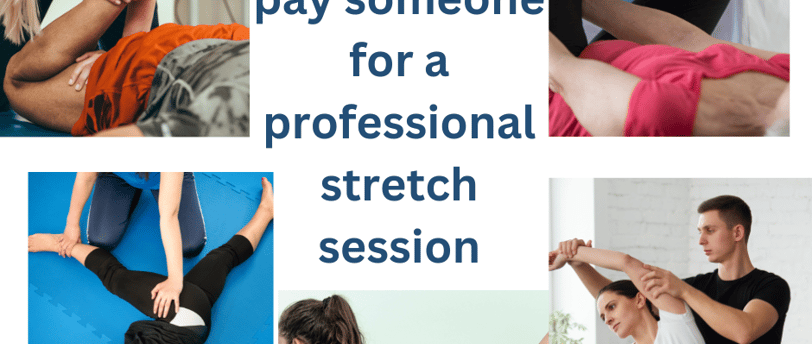Why it’s worth paying for a professional Assisted Stretching Session!
4/30/20232 min read


Why it’s worth paying for a professional Assisted Stretching Session!
Stretching has been part of health and wellness for a long time. Professionals are recommending and recognizing stretch therapy as an added modality, similar to Physical and massage therapy, and chiropractic care.
IT IS BENEFICIAL FOR:
Pain management
Postural improvement
Increased circulation
Loosening the fascia, muscles, and joints
Better recovery, less stiffness and soreness
Increased flexibility and mobility
Improved sleep
Decreased stress and tension ( headaches)
Post op
Within the last two years I have been practicing and certified in Active Isolated Stretching (AIS), with the founder Aaron Mattes. Dedicating full sessions to Assisted stretching has made major impacts with my clients, and even myself. Sessions typically include initially finding each individual’s concerns and needs to be addressed, I guide them through dynamic movements using manual therapy along with the use of some equipment.
WHY YOU SHOULD PAY A PROFESSIONAL:
Most people do not always stretch the correct way on their own. They hold positions too long or force themselves into positions they’re not prepared for, which can have adverse effects on the body.
Many of my clients sit all day for a living. They have extremely tight hip flexors, low back, neck and shoulder muscles, along with limited range of motion. Sedentary individuals are much more difficult to gain flexibility than active individuals, since the stress from athletes comes from activity and movement.
Muscles on the body are typically tighter than we realize. During stretching or Pilates sessions I usually discover that most people have very tense muscles and decreased range of motion even if they don’t experience tightness in those certain muscles. When, and if people do some stretching on their own it’s normally brief and a couple of the major body parts, such as the hamstrings, triceps, maybe quadriceps. The reality is there are over 600 muscles in the body, and the ones being ignored are most likely causing chronic pain!
It’s not only for pain management. You may not experience chronic pain on a daily basis, but keeping good flexibility is helpful in preventing pain and further issues.
